Land of festivals -Nepal
Festivals of Nepal
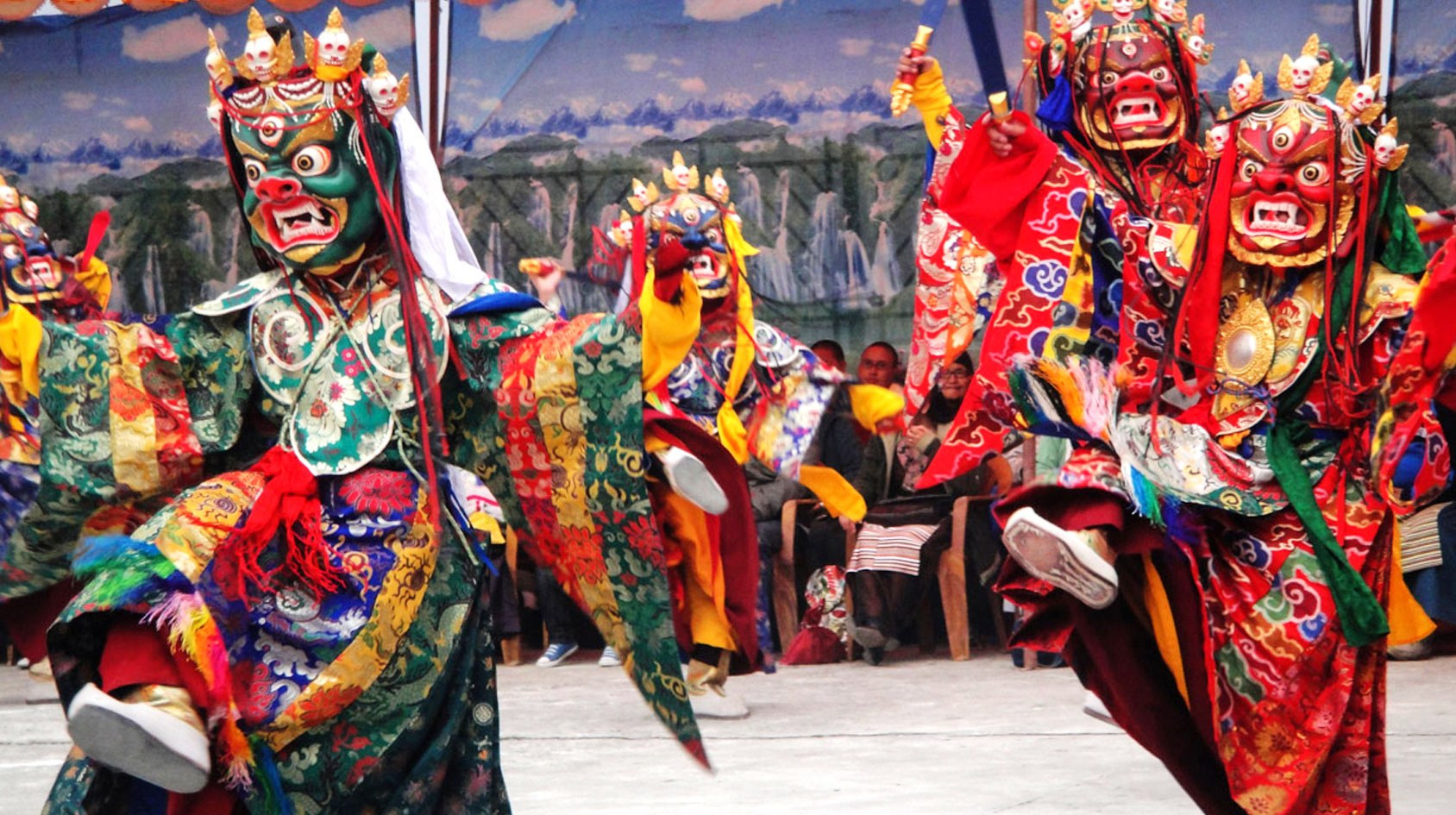
Nepal is distinctly known as the world of colorful vibrant festivals. Most of the festivals celebrated in Nepal have religious connotation and some are based on important events from ancient mythology and epic literature.
Nepal is a diverse country with its varying landscape, rich bio-diversity and even more diverse culture of the people residing in it. Each community holds their own unique cultures and traditions which they have been following for centuries. Each of them has their own set of beliefs and their own festivals to celebrate. Every day is a day of celebration for one or the other community. The best part of all is one’s pride of one’s own culture and respect for the others’. This is why these numerous cultures and festivals are harmoniously coexisting in Nepal.
It may not be possible to mention all the festivals celebrated by all the communities,
Here are depicted the top major festivals in Nepal.
Dashain & Tihar
(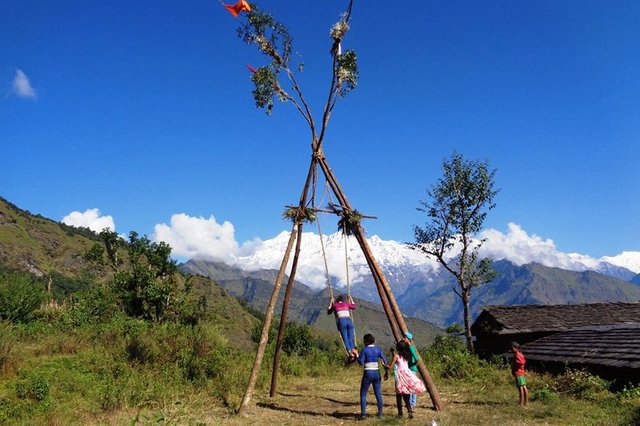
Dashain is considered a major festival of Nepal as about 80 percent of the people follow Hinduism. This most auspicious festival is celebrated to rejoice the victory of good over evil. It is the longest and most anticipated festival in Nepal, Bhutan, Burma and North Indian hills. People return from all parts of the world, as well as different parts of the country, to celebrate together. All government offices, educational institutions and other offices remain closed during the festival period.The festival falls in September or October, starting from the shukla paksha (bright lunar fortnight) of the month of Ashvin and ending on purnima, the full moon.
It is observed for 15 days. Ghathasthapana, the first day of the Dashain marks the beginning of the festival.Families worship the Ashta-Matrikas (the 8 Tantrik Goddesses) and the nine avatars of Durga (the 9 Goddess Durgas) for the remaining nine days.The Goddess Ambika (identified with Durga or Chandi) leading the Eight Matrikas in battle (top row, from the left) Narasinhmi, Vaishnavi, Kaumari, Maheshvari, Brahmani. (bottom row, from left) Varahi, Aindri and Chamunda or Kali against the Rakshasa Raktabija.
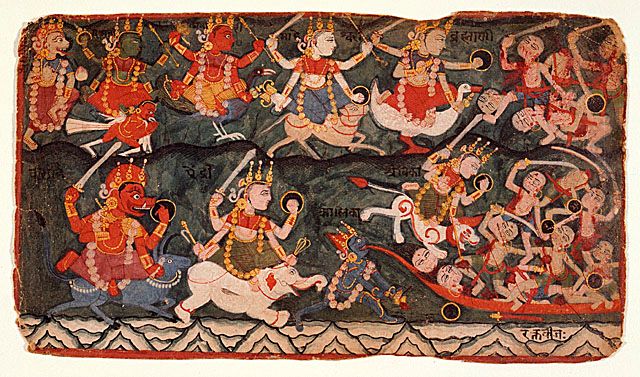
On the tenth day, people receive Tika and Jamara
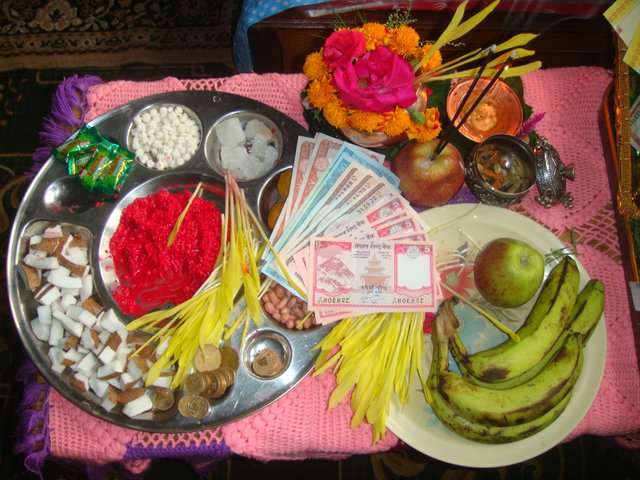
along with blessings from the elders and this continues for the next 5 days.
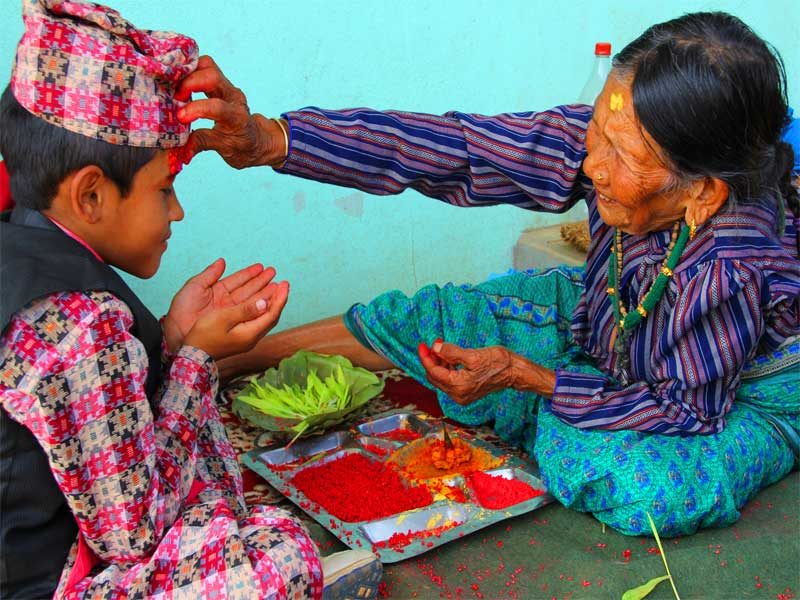
And fly kites high above the clouds
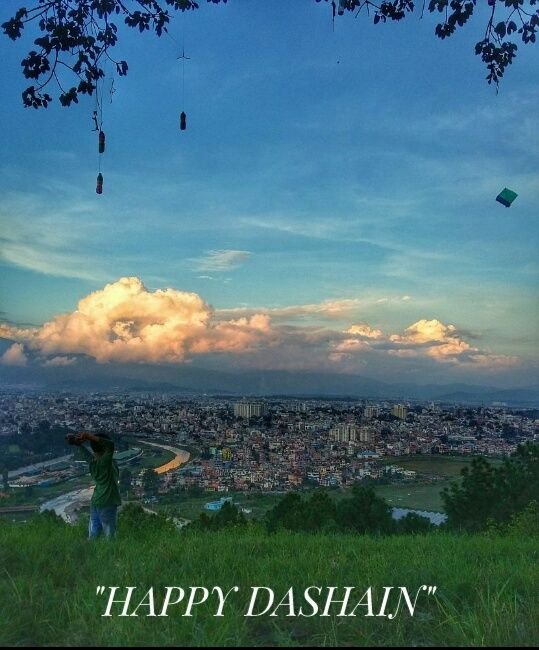
The last day of the festival lies on the full moon day and is called ‘Kojagrata’ Purnima. Every community has their own traditions and rituals to celebrate the sacred festival of Dashain.
Tihar , also known as Deepawali and Yamapanchak or Sunti, is a five-day-long Hindu festival celebrated in Nepal and in the Indian states of Assam and Sikkim including in Darjeeling district of West Bengal. It is the festival of lights, as diyas are lit inside and outside the houses to make it illuminate at night.
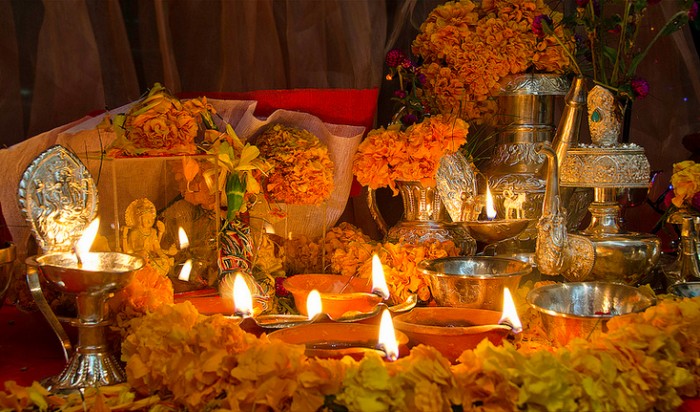
Night time during tihar
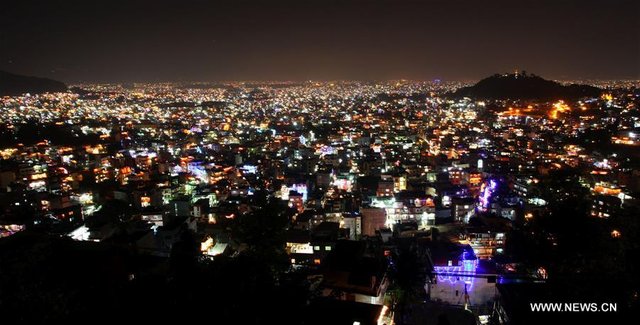
This festival is celebrated by worshipping crows and dogs on the first two days respectively.
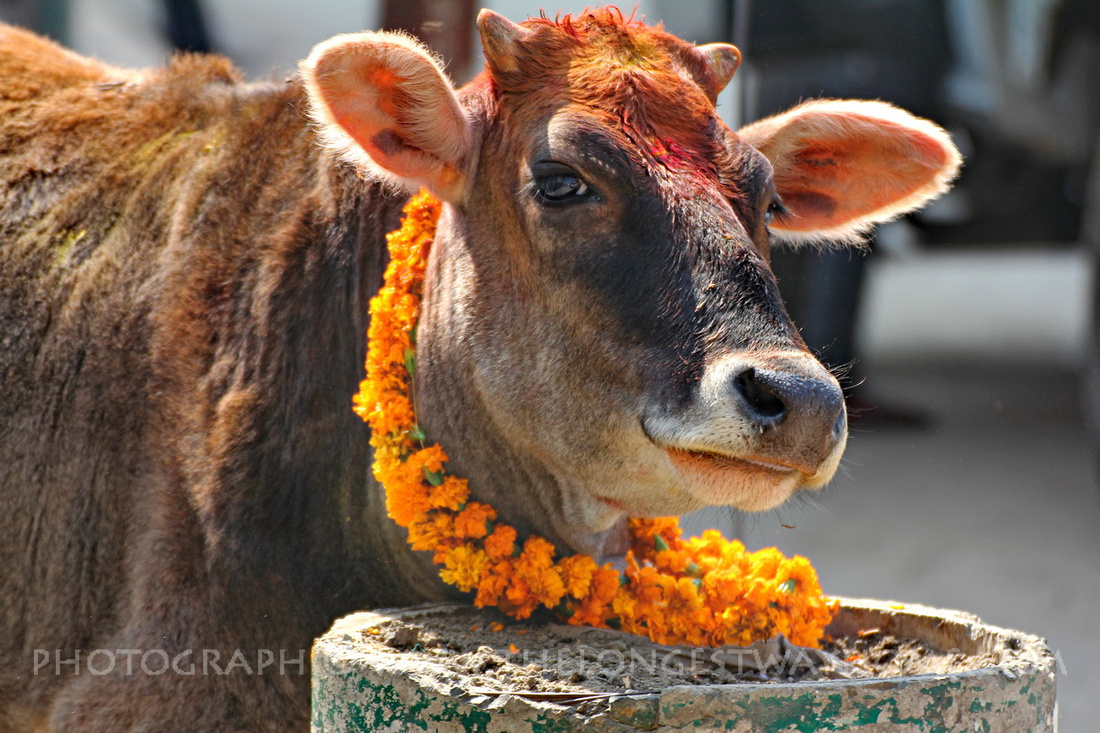
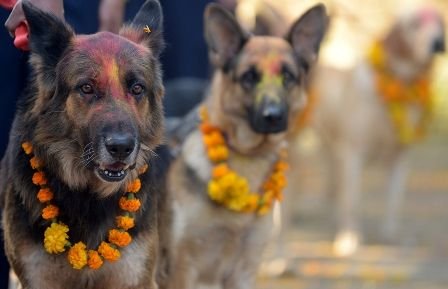
On the third day of the festival, people worship cows during the day and Dipawali (Lights) is observed in the evening by worshipping the goddess of wealth- Laxmi. Oxen is worshipped on the fourth day and Govardhan Pooja is conducted during the evening. Newar community, however, celebrates New Year and performs Mha Puja on the fourth day. The last day of Tihar is Bhai Tika (Brother’s Day). It is celebrated by rejoicing the pleasant relationship of the siblings. On this auspicious day, sisters put Tika on their brother’s forehead to wish them longevity and good health.
Indra Jatra:

This festival is celebrated to honor Lord Indra, the God of rain also know as the king of heaven. Indra Jātrā as it is most commonly known as Yenyā (Nepal Bhasa: येँयाः) is the biggest religious street festival in Kathmandu, Nepal. Ye means "kathmandu" and nya means "celebration", together it means "celebration inside the valley, Kathmandu" in Nepal Bhasa.It is celebrated for 8 days, mainly in the Kathmandu Durbar square, and was started by King Gunakamdev after founding the city of Kathmandu in the 10th century. The celebrations consist of two events. Indra Jātrā is marked by masked dances of deities and demons, displays of sacred images and tableaus in honor of the deity Indra, . The other event is Kumāri Jātrā, the chariot procession of the living goddess Kumari. Kumari Rath Yatra was later added to the celebration in the 18th century.
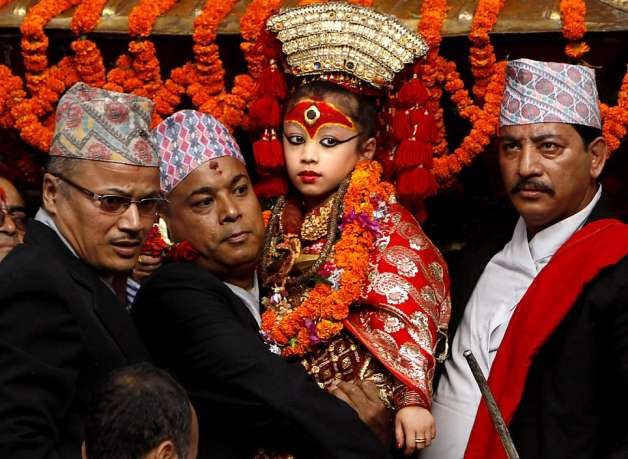
The history behind the festival states that when Lord Indra was fetching night jasmine from Kathmandu for his mother, he was captured and held captive by the locals. Once they realized they had captured Lord Indra, they were scared and immediately released him. Indra’s mother blessed the city for releasing her son and it is believed that Kathmandu receives enough dew even in winter months for cultivation because of the blessing. The different parts of the procession are the reenactment of this story like Dagin (Indra’s mother frantically searching for her son around the city) and Pulu Kisi (a dance depicting Indra’s elephant frantically moving around the city looking for its master).
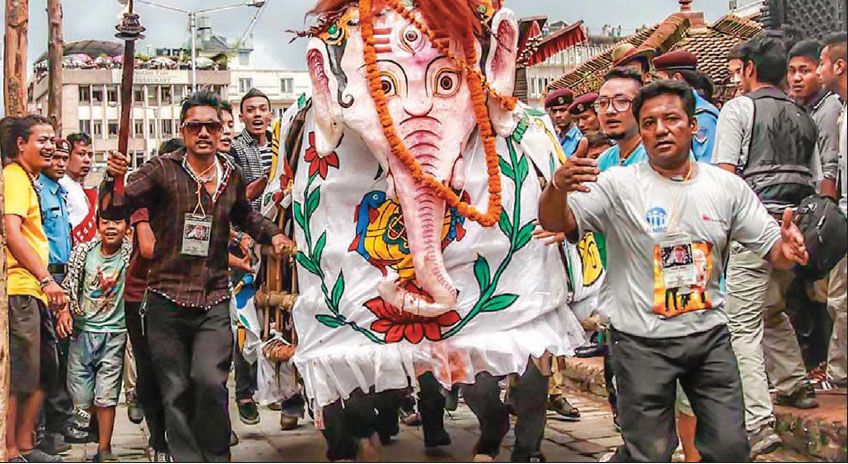
The festival is started with the erection of a pole called Yasin, which is obtained from a single tree stripped off its branches and bark. The procession route in the historic parts of the city includes people lighting incense and candles as homage to their deceased family members.
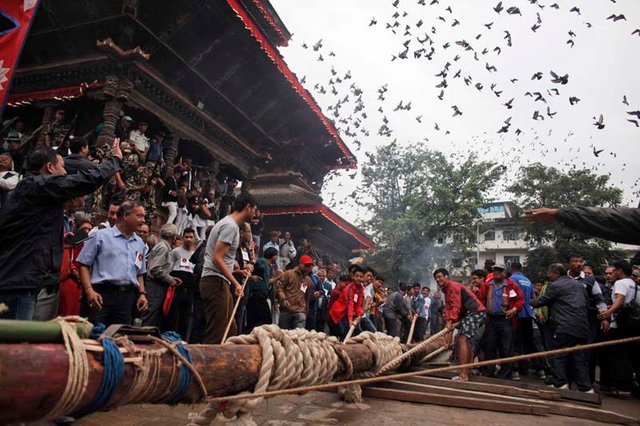
Fagu Purnima or Holi:
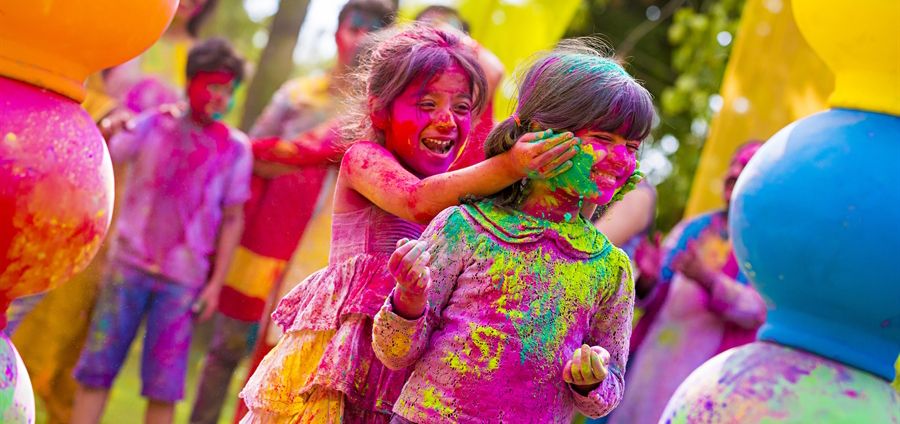
Holi ( Sanskrit: होली Holi) is a Hindu spring festival celebrated in India and Nepal, also known as the "festival of colours" or the "festival of love". The festival signifies the victory of good over evil,arrival of spring, end of winter and for many a festive day to meet others, play and laugh, forget and forgive, and repair broken relationships. This festival is mainly celebrated by playing with colors and water .The day is supposed to be a celebration of the death of ‘Holika’, someone who tried to kill Vishnu devotee Prahlad. She and Prahlad were both lit, but only Holika burned to death. This could be the reason for splashing each other with water. Holi celebrates arrival of spring as well.
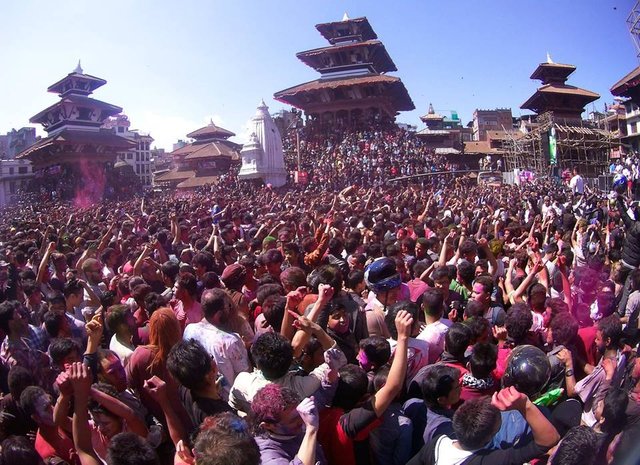
Days starts to get warmer and colorful flowers bloom. This could be another region for the use of water and colors in this festival. Holi is celebrated on two different days. Hilly region of the nation celebrates the festival on the day of the full moon while the Terai region celebrates it the next day.
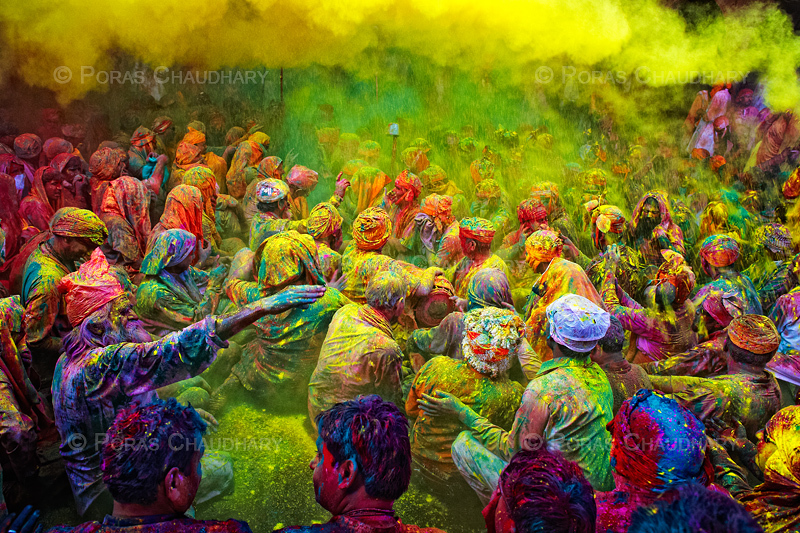
Bisket Jatra
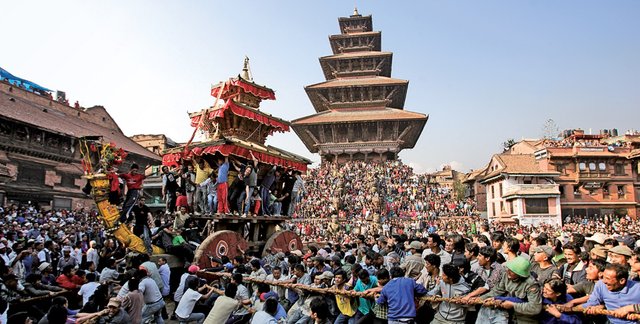
Bisket Jatra is an annual event in Bhaktapur, Dhapasi and Tokha in Nepal.This festival is celebrated at the start of the new year on the Bikram Sambat calendar, however, the festival itself is not related to Bikram Sambat.Legend has it that this celebration is the "festival after the death of the serpent". Numerous areas of Bhaktapur city celebrate this festival according to their own ritual. The most eventful places in the course of the festival are Bhaktapur Durbar Square and Thimi Balkumari. A huge chariot carrying a statue of the God Bhairava is pulled by hundreds of people to the Khalna Tole. Approximately a month earlier, the chariot is assembled near the Nyatapole temple (five stair temple). The most spectacular event on Bhaktapur Durbar square is a huge tug-of-war between the eastern and western part of town. Each team tries to pull to their side but later the chariot heads toward Khalna Tole. A huge approximately 25 meters Yoh si (lingo) is erected in the stone called yoni (female genital) base. In the evening of New Year, the Yoh si is pulled down as the New Year officially commences.
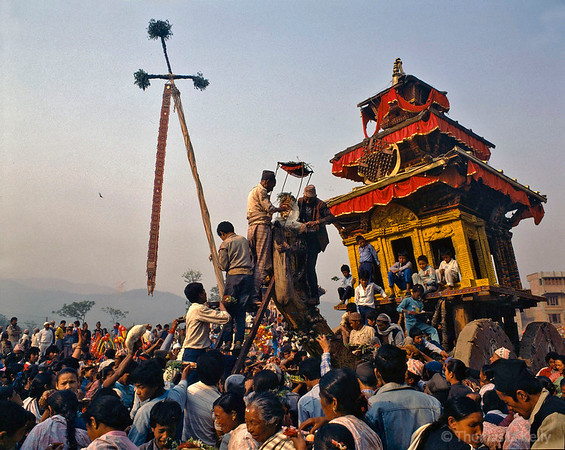
Ghode Jatra
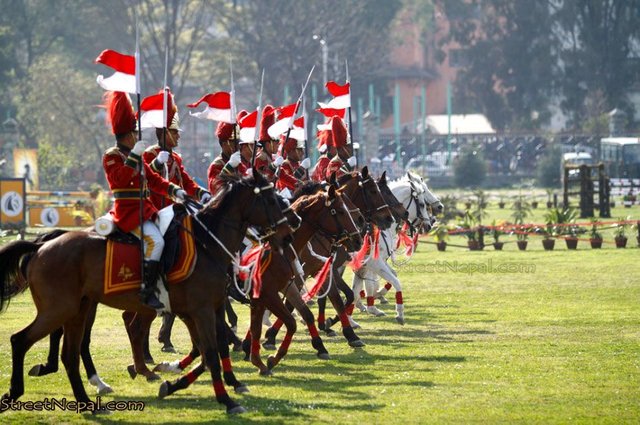
Ghode Jatra (the horse parade), celebrated during Chaitra (March- April), is another festival that unites all the people of the valley. Though there is no religious background for the parade, it is believed that a demon spirit was buried under Tundikhel and the horse parade ensures that it does not return from the burial site. There will be a number of gatherings or parties in the Newari community during this festival. The festival is marked by various parades, athletics, acrobats etc. performed by the Nepalese army in Tundikhel which is attended by a number of high ranking officials of the country. Bhadrakali, Kankeswari and Bhairav are deities worshipped during the day.
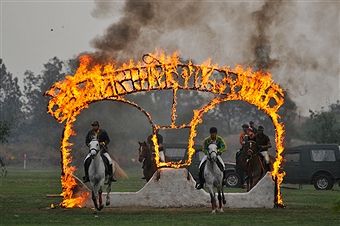
Gai Jatra:
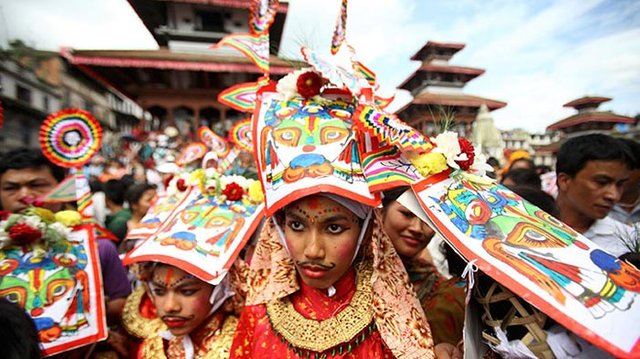
This festival is celebrated with a number of events full of humor, satire, jokes, etc. as it is legally allowed to make jokes about anything and anyone that day. A number of magazines, TV shows and theatre plays show comical plots. The Historical origin of the festival, according to evidences, is that after the death of his son, King Pratap Malla was very worried about his queen who was grief stricken. So, he announced that every family who had lost a member would join a procession. Procession follows a cow as cows are believed to lead souls to the other world. People in the procession are dressed ridiculously or as ghouls. They make funny faces and jokes so that people would forget the grief of losing their loved ones.
Now a days, if a cow is not available, little boys dress up as cows and head the procession. It is celebrated differently in the three cities of the valley as each city observes the events differently according to their own cultures.
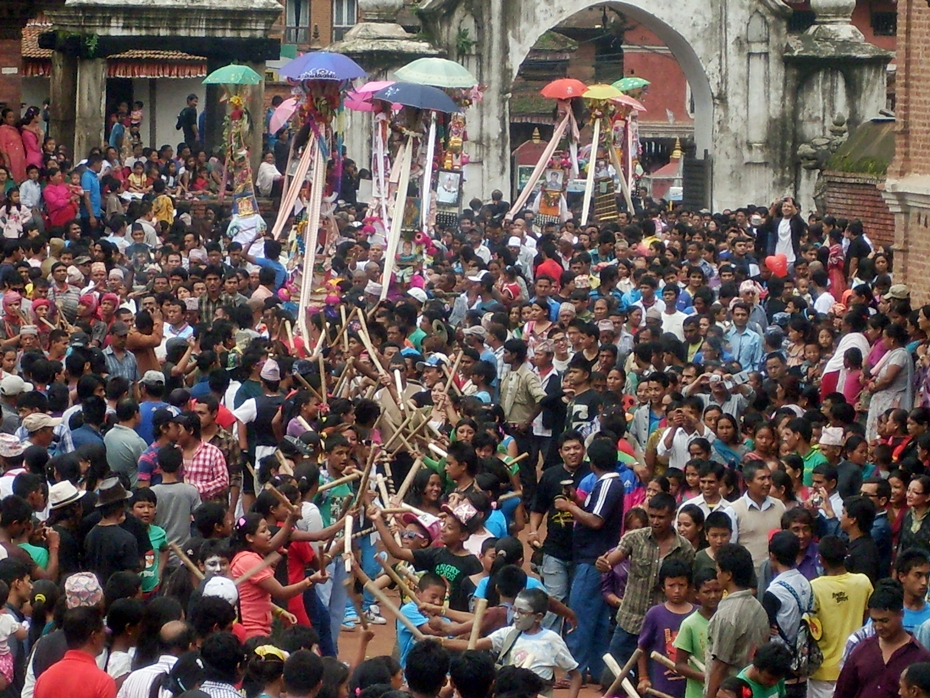
Rato Machchhindranath Jatra:
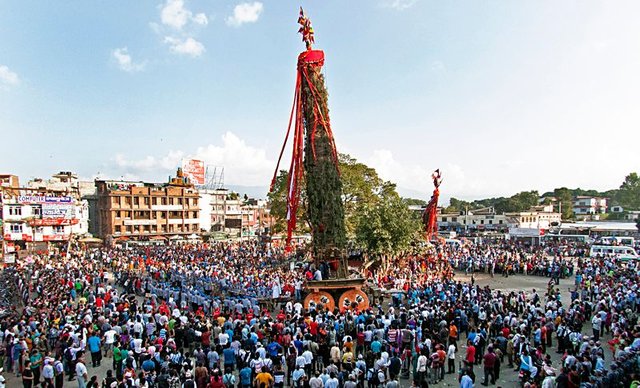
Rato Machchhindranath Jatra is one of the most significant festivals in Patan. An entire chariot is erected from the wood and bamboo from selected forests of the country having religious importance. The festival is commenced by a Paaneju priest placing the idol of Rato Machchhindranath inside the chariot. As Rato Machchhindranath is a deity worshipped by many Hindus and Buddhists in the valley, the chariot is carried through a number of places in and around Lalitpur including Gabahal, Sundhara and Lagankhel.
Rato Machchhindranath is also worshipped as Padampani Lokeshwor, Avalokiteshwor and Aryavalokiteshwor and Karunamaya. He is believed to have been brought from Assam when Kathmandu valley was suffering from a long drought. He blessed the valley with rain then and is still worshipped to welcome the rainy season. The festival comes to an end on Bhoto Jatra when a marvelous Bhoto(vest) is shown from the chariot to the public. Then the chariot is dismantled and the idol of Machchhindranath is kept at a temple in Bungmati village for next six months.
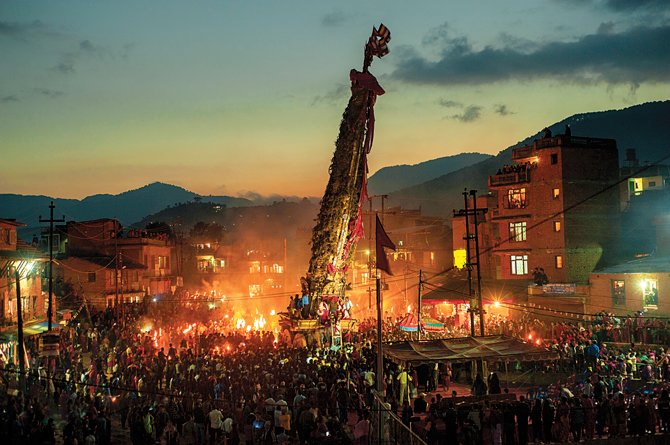
Lhosar:
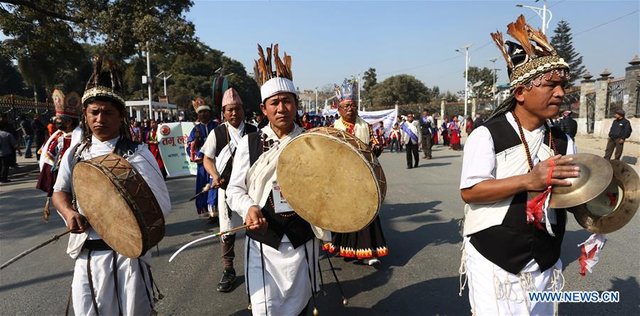
Lhosar (or Losar) means ‘New year’. It is celebrated by various Buddhist communities of Nepal. Different communities celebrate Lhosar at different times of the year. Because of this, there are three Lhosar festivals- Tamu Lhosar, Sonam Lhosar and Gyalbo Lhosar.
Tamu or the Tola Lhosar is celebrated by the Gurung community, Sonam Lhosar is celebrated by the Tamang and Yolmo communities, whereas Gyalbo Lhosar is the festival of the Sherpa and Tibetan communities living in the hilly terrain.

Lhosar is celebrated by feasting, dancing and warm family gatherings. Different traditions are followed, which includes reading prayers, cleaning and decorating homes and monasteries, offering special foods to different deities and others.
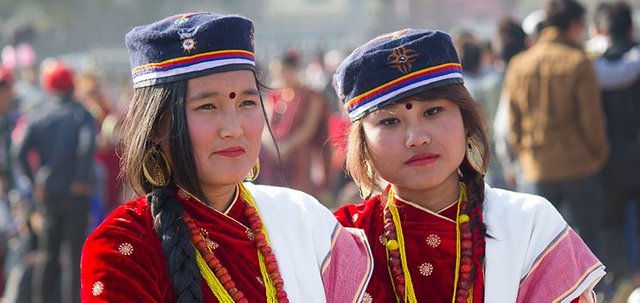
Mahashivaratri:
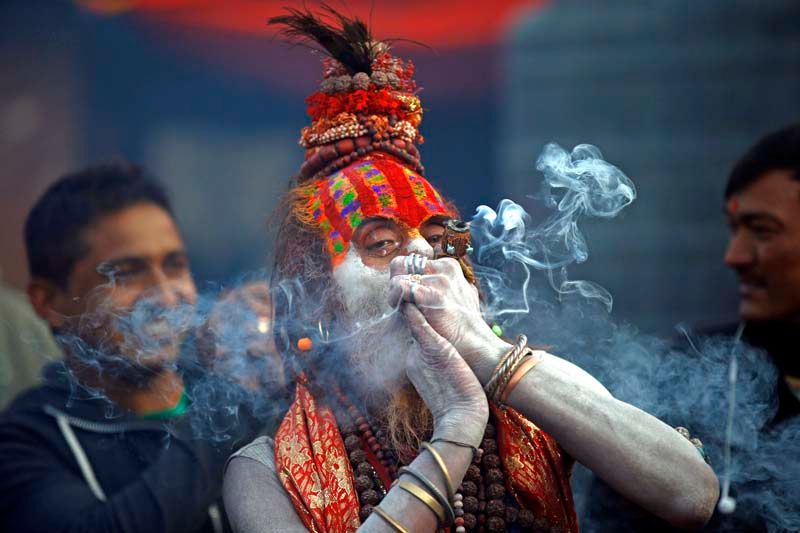
Maha Shivaratri is an annual festival dedicated to the Hindu god Shiva, and is particularly important in the Shaivism tradition of Hinduism. Unlike most Hindu festivals which are celebrated during the day, the Maha Shivaratri is celebrated at night. Maha Shivaratri is National Holiday in country and celebrated widely in the temples all over Nepal but especially in the Pashupatinath temple.
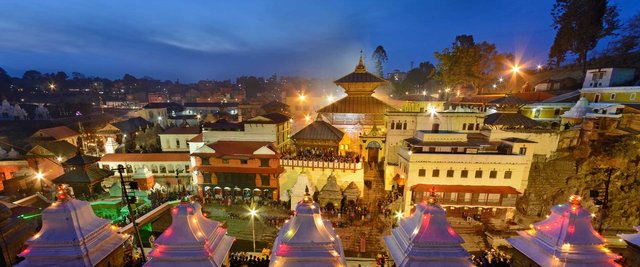
Thousands of devotees visit the famous Shiva Shakti Peetham nearby as well. The Nepalese army parades around the city of Kathmandu to pay tribute to Lord Shiva, and holy rituals are performed all over the nation. Artists from various classical music and dance forms perform through the night. On Maha Shivaratri, married women pray for the well being of their husbands, unmarried women pray for a husband like Shiva, considered as the ideal husband. Shiva is also worshiped as the Adi Guru (first teacher) from whom the yogic tradition originates.
Apart from these festivals, Nepal celebrates more and more other regional, communal and seasonal festivals. Visit to Nepal, no matter which time of the year, more than a hundred festivals are celebrated throughout the year.Nepal is steeped in myths and legends. Every little gesture has a deep meaning behind it. To explore all this is very interesting, but to mention them all in one article is impossible.
Therefore, only a select few of all the festivals of Nepal are mentioned here. Check out our other articles to know more about the festivals celebrated in Nepal.
Which is your favorite festival in Nepal? Share your experiences by commenting below.
Thanks Sanjog for posting this. I miss Nepal even more now. Diwali is coming soon. Hope to see Diwali pictures as well.
Of course I'll be posting diwali pics as well just stay tuned for it.
Congratulations @sanjogshrestha! You have completed some achievement on Steemit and have been rewarded with new badge(s) :
Click on any badge to view your own Board of Honor on SteemitBoard.
For more information about SteemitBoard, click here
If you no longer want to receive notifications, reply to this comment with the word
STOP